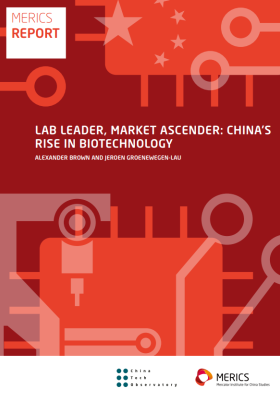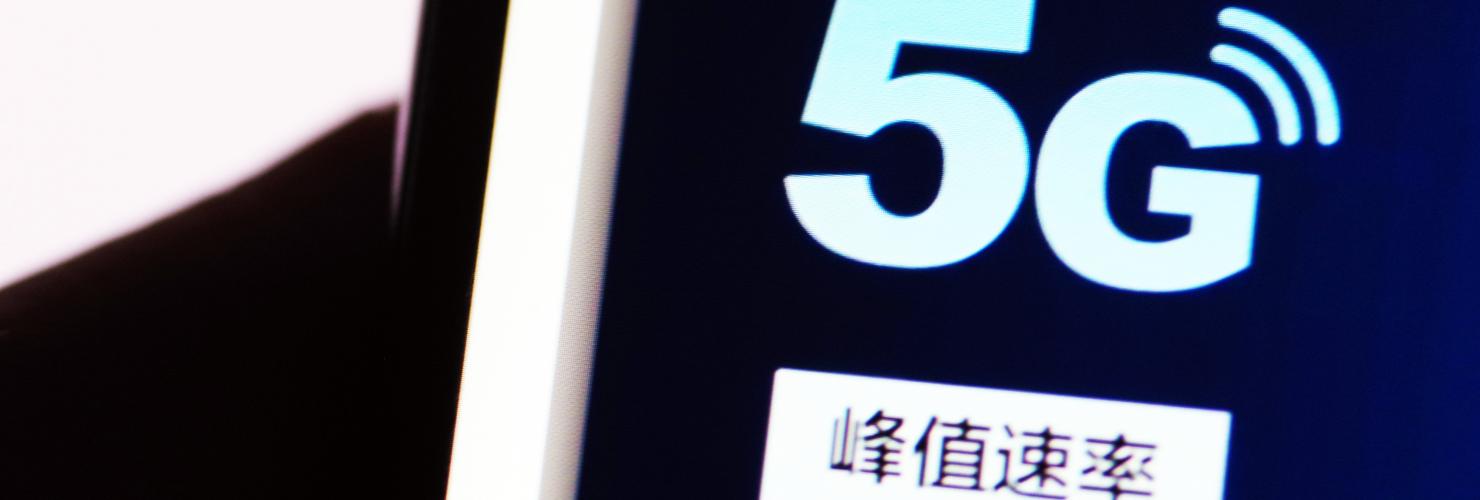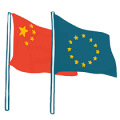

Chinese tech standards put the screws on European companies
China’s efforts to shape global technology standards and norms have been at the heart of its ambitions to achieve technological self-reliance. Now these efforts are yielding results in areas like 5G, Artificial Intelligence (AI) and cybersecurity – and they endanger Europe’s industrial competitiveness.
Chinese tech companies’ involvement in European ICT infrastructure faces growing scrutiny after a Huawei employee was arrested in Poland on spying charges recently. Australia and other countries have banned Huawei and ZTE from their 5G networks based on documented national security risks. Several European governments are considering doing the same. Looking beyond security, earlier last year, French president Emanuel Macron urged Europe to set global standards for regulating technology instead of letting an “over-centralized” Chinese model become the norm.
While a debate about the societal and security impact of China’s policies on the global governance of technology is emerging across the European Union, the economic battle over technical standards receives less attention. Yet, firms having their technologies translate into standards earn massive returns through market dominance and royalties. The competitive advantage that Microsoft, Google and Qualcomm with their standard-essential patent portfolios bring to the American economy is indicative of this point.
Recently, China has been highly proactive in influencing global tech standards and exporting its own along the “Digital Silk Road.” China’s transformation from a standard-taker into a standard-maker bears economic implications for Europe. First, as Beijing’s state-led approach to standardization exacerbates competitive disadvantages for non-Chinese businesses operating in China and in third markets, European companies must be prepared to face losses of market share. Second, as a new, powerful player enters the standardization game for emerging technologies, European economies may find themselves increasingly dependent not just on US but also on Chinese digital solutions.
Homegrown standards power China’s “indigenous innovation” agenda
There is a saying in Chinese that only companies that are able to set standards qualify as “first tier companies” (一流企业). As standardization is the bridge between research and commercialization of innovation, China’s desire to be in the game is natural.
Setting standards could lower the expensive licensing fees paid to foreign multinationals. Payments for the use of foreign technology have quadrupled since 2005, making China the second-largest payer of licensing fees in the world. The “trade war” with Washington has increased the sense of urgency in Beijing for reducing supply-chain dependency on US tech giants, particularly in hardware segments like semiconductors. In 2017, China imported chips at a value of 260 billion USD, more than the price of its oil imports.
Standardization, too, must be seen in the context of China’s state-led plan of technological dominance. As part of a quest to boost “indigenous innovation” (自主创新) and develop homegrown technologies and national champions, a government-sponsored “patent fever” has led China to file more than any other country in the world. Although the level of domestic R&D has improved dramatically (Chinese companies hold ten percent of patents essential to 5G standards, only ranking behind Qualcomm and Nokia), quality is often sacrificed to quantity.
China’s domestic “standardization work” (标准化工作) is driven by a top-down logic. At a time when the government appears to have toned down the Made in China 2025 rhetoric of industrial self-reliance, the standardization push is emerging as the “next big thing” for China’s techno-nationalist ambitions.
Although last year’s revision of the national Standardization Law aims to make the existing system more enterprise-driven and aligned with international practices, the government retains a central role by setting compulsory standards, particularly in areas such as the Internet of Things (IoT), where vaguely defined national security is at stake. Such a bifurcated standards system – simultaneously industry- and state-led – is difficult for foreign businesses to navigate, let alone influence. By contrast, until recently, Huawei and ZTE were able to actively take part in the conversation about ICT specifications in Europe.
To preempt competitors in emerging technologies ranging from cloud to virtual reality, the Standardization Administration of China (SAC) and the National Academy of Engineering are quietly working on “China Standards 2035” (中国标准2035), a nation-wide effort to develop industrial standards and eventually internationalize them.
Besides dictating technical specifications, China has cybersecurity regulations in stock that can be used to multiply post-market access barriers for foreign companies at any time and in a targeted manner. With the Cybersecurity Law, a host of foreign businesses have already been forced to comply with an array of sophisticated yet vague standards for cybersecurity review and certification as a precondition for doing business in China. As a result, European firms may be asked to disclose sensitive information and IP.
China gains voice in the standards game
Chinese companies are intensifying their influence in international standard-setting bodies such as ITU and ISO. State-sponsored efforts to shape international standards have been ongoing since the country entered the WTO. Following China’s accession, the Standards Administration of China had explicitly mentioned technical standards as a protective tool that could compensate for lower trade barriers.
Previous attempts to internationalize Chinese standards, such as bids to promote homegrown alternatives to Wi-Fi (WAPI) and 3G (TD-SCDMA), often met with failure. This seems to change. Fueled by renewed ambitions, Chinese companies like Huawei have scored successes in 5G standards by playing a leading role in the Third-Generation Partnership Project (3GPP, the organization that sets global telecommunications standards) and promoting adoption and testing of their solutions across Europe. Though standardization forums host technical and non-discriminatory discussions which are difficult for states to manipulate, Beijing has sought to further China’s prominence in 5G standardization in a targeted manner. The Chinese government recognizes 5G’s significance for powering virtually all disruptive applications, from driverless cars to AI weapons.
In a bid for leadership in AI governance, Beijing also managed to host the first meeting of the SC42 (currently the main venue for AI standardization) and secure a high level of domestic representation, a sign that Chinese voices will be influential in shaping the future of this ubiquitous technology. Domestically there is a sentiment that China should take the unprecedented opportunity to set the rules for emerging technological developments in which it plays a leading role. Meanwhile, China leads the newly created international research group on IoT and blockchain standardization.
China has also worked to change the rules of the game: by pushing for inexpensive licensing for IP embedded into standards, Chinese firms prioritize profits derived from increased product sales over monetization of intellectual property. Such preference for cheap IP threatens the competitiveness of European companies, even more so now that low-cost, Chinese ICT hardware gains market share in developing countries along the Belt and Road (BRI). Popularizing Chinese standards is in fact part of the BRI design. To remain competitive, European firms might have to fundamentally rethink their approach to IP, including by designing ways to improve developing countries’ access to patented technologies.
Europe must closely monitor China’s standardization ambitions
Greater Chinese involvement with international standard-setting bodies should be welcomed. It is in the interest of European companies that China harmonizes its standards with international ones. But standardization for China is part of a larger toolkit of distorting industrial policies. Europe is right to focus on the risks Huawei poses to its national security. Yet at the same time, the company was the top filer with the European Patent Office in 2017.
The standards race is about profits and technological leadership. Europe must do more to support its startup community instead of turning into a testing lab for Chinese technologies. Instruments like the pan-European VC Fund-of-Funds are smart, but fragmentation between national regulatory, tax and digital landscapes hampers the development of “first-tier” companies. In China, European firms should keep lobbying in standardization working groups, which requires coalition-building. Closely monitoring China’s domestic and international standard-setting strategies is a precondition to crafting effective responses.

